Climate Smart Agriculture
Quick summary: FAO estimates that agriculture production will have to increase 60 % to satisfy the demands for food while halving the carbon footprint. Adapting to climate change and reducing emissions is necessary to achieve food security without depleting the natural resources. Climate Smart Agriculture (CSA) is an integrated approach to address the interlinked challenges of food security and climate change.
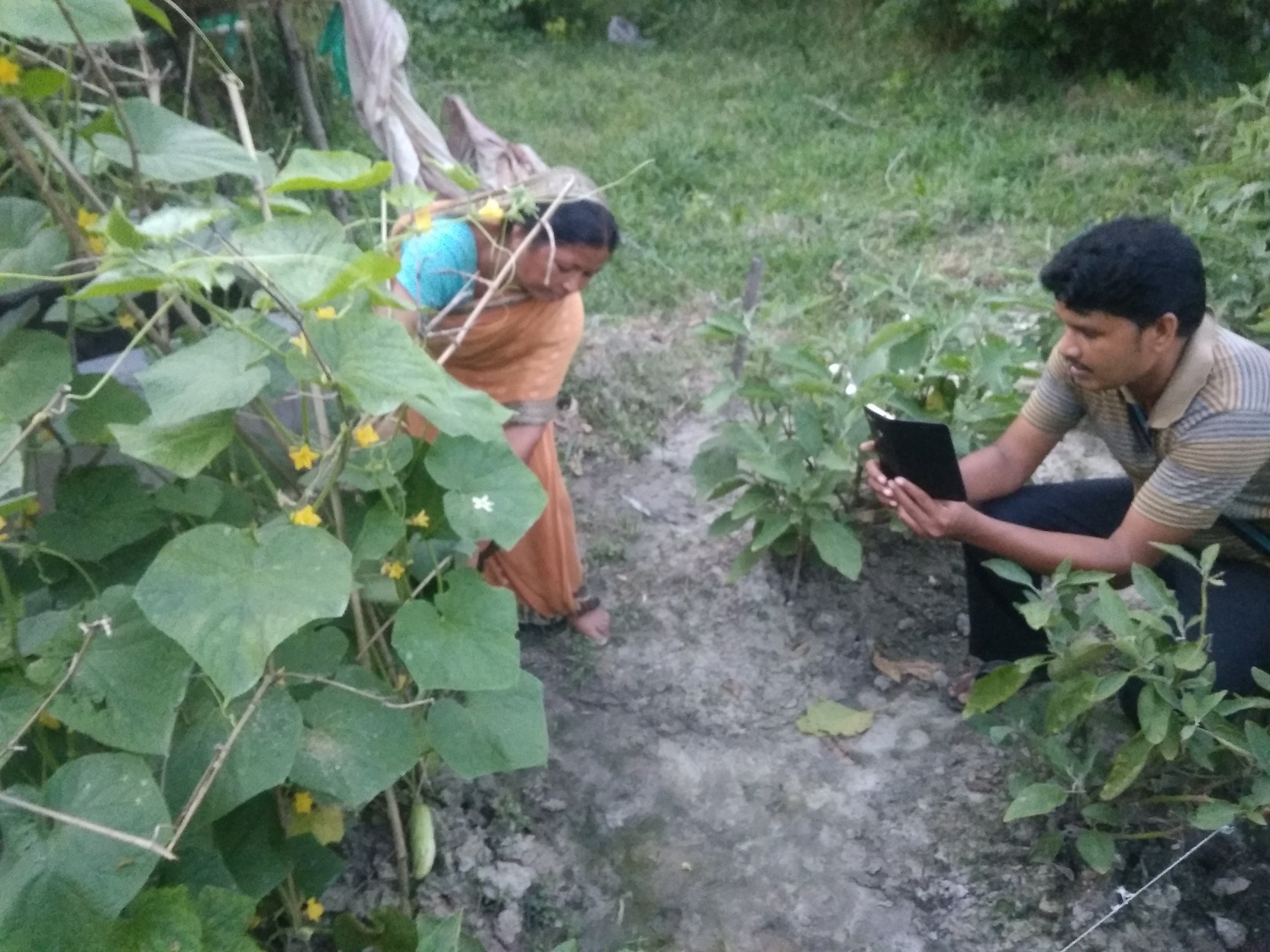
Climate Smart agriculture is gaining increasing attention and with the impacts of climate change being felt in food production systems together with agriculture contributing to global emissions, agriculture lies at the heart of these concerns. Read on to see if there is a need to get a greater clarity on what climate smart agriculture is and whether it will benefit food systems in the face of climate change
The world’s population is estimated to hit 9.8 billion by 2050 and the 2 billion increase over the next 30 years will be living in cities in the developing countries. There is a requirement for transformation in agriculture to feed this growing population. FAO estimates that agriculture production will have to increase 60 % to satisfy the demands for food while halving the carbon footprint. Climate change will make it even more difficult considering the adverse impacts on agriculture, costs and following a business-as-usual scenario.
The Need for Agriculture Transformation
Adapting to climate change and reducing emissions is necessary to achieve food security without depleting the natural resources. The extremities in weather and prevalence of unpredictable climate changes lead to reduction in production and leave the smallholder farmers vulnerable to these uncertainties. The smallholder farmers lack the knowledge on adapting their production systems to these changes and have limited resources and access to technology and finance. In order to enhance food security, contribute to climate change and preserve the natural resources, a transition to agriculture production systems which are more productive with efficient usage of inputs, less variability and resilient to risks is inevitable. A major shift in utilisation and management of resources like land, water and soil along with governance and legislation is important. The increasing temperatures, vagaries in weather, invasive crops and pests and the shift in ecosystem boundaries are few of the challenges that needs to be addressed. The climate change is reducing crop yield and quality of crops along with lowering of livestock productivity. The reduction of GHGs and increasing carbon sinks should significantly contribute to the mitigate climate change.
What is Climate Smart Agriculture?
Agriculture generates 18 to 30% of greenhouse gas emissions and about one-third of food produced globally is wasted. There is a need to address both these issues to help meet the climate goals and reduce environmental stress.
Climate Smart Agriculture (CSA) is an integrated approach to managing cropland, forests, livestock and fisheries that addresses the interlinked challenges of food security and climate change with economic, social and environmental sustainable development. The CSA approach is designed to identify and operationalize sustainable development within the parameters of climate change.
It is composed of 3 main pillars
- Increased productivity
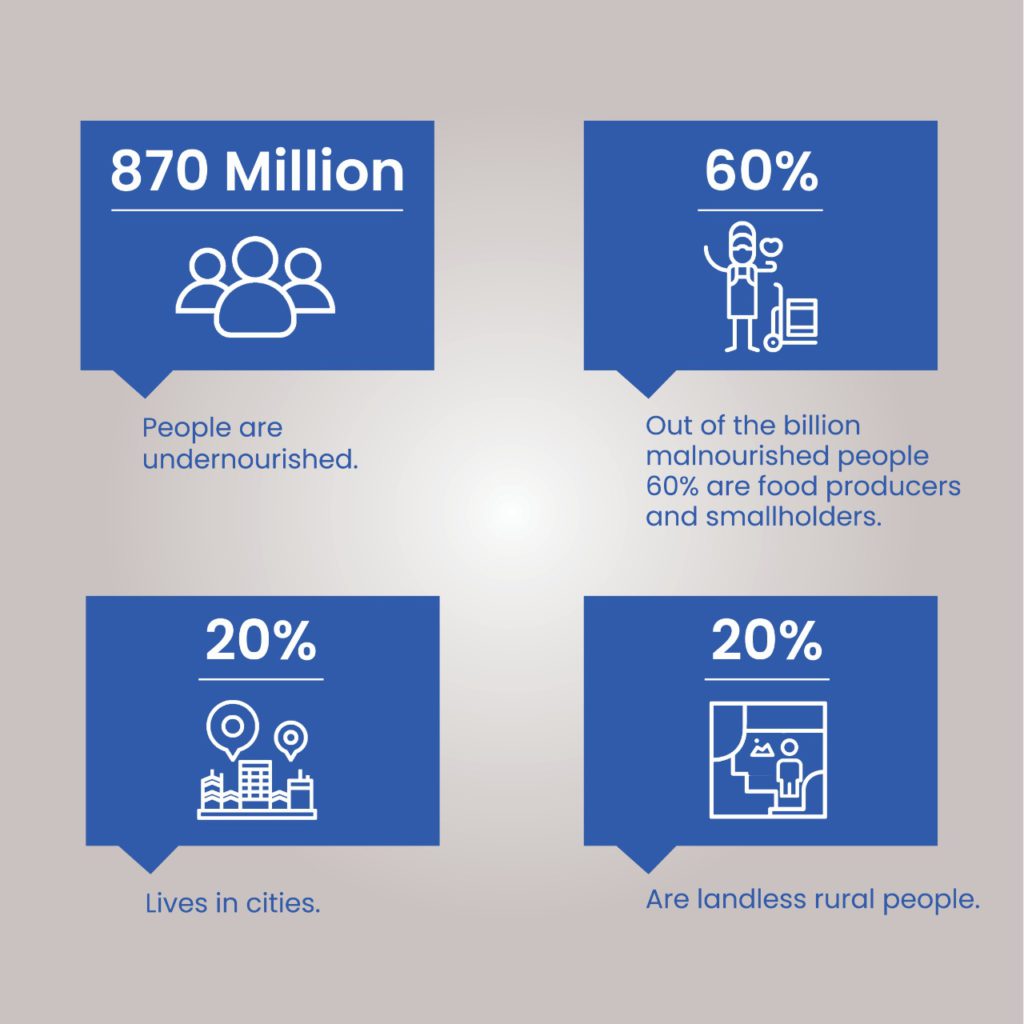
There is a need to sustainably increase agriculture productivity with greater nutrition security and boost incomes of the 75% of world’s poor who live in rural areas and rely on agriculture for their livelihood. Ensuring availability and accessibility of healthy nutritious food is important.
- Enhanced Resilience
Climate change has impacted agriculture and food production
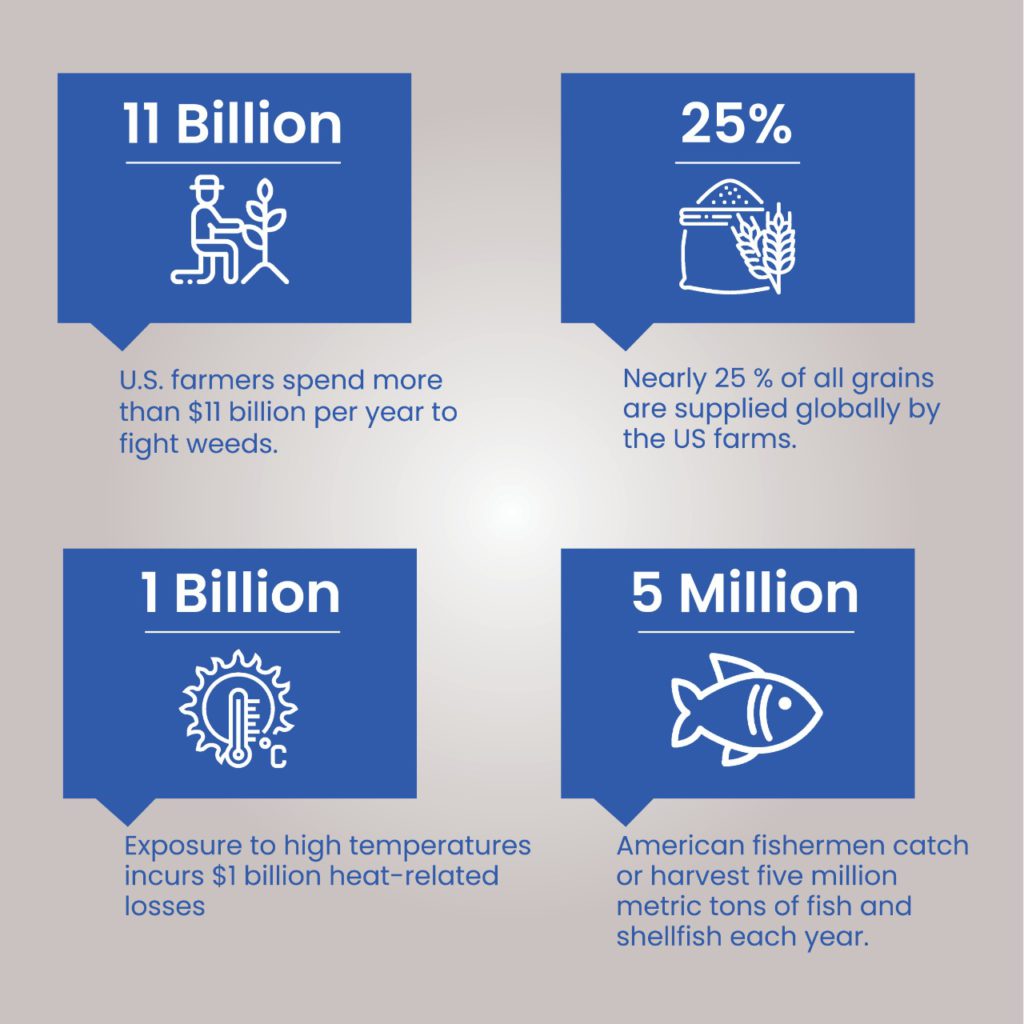
Adapting and building resilience to climate change is essential to reduce vulnerability to drought, floods, pests, diseases and other climate related risks. The change in rain patterns, salinization, sea level rise, deforestation has a great impact on agriculture, forestry and fisheries.
- Reduced Emissions
There is a need to reduce and remove the greenhouse gas emissions wherever possible. Lowering emissions for each calorie or kilo of food produced and switching to sustainable diets should be considered.
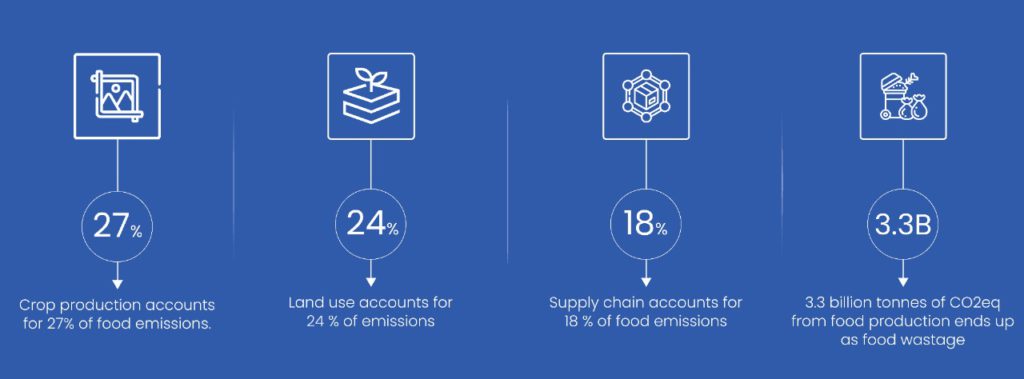
These emissions are dependent on the natural processes and agriculture practices which makes it difficult to control and measure. The agriculture sector and forestry have to be managed effectively that can lead to carbon capture and storage in soil and biomass.
Climate Smart Agriculture revolution
The UN Framework Convention on Climate Change (UNFCC) was created to address the threat of climate change to agriculture and global food security. As the developing countries are exposed to weather extremities, they are vulnerable to climate change to a larger extent, besides a huge number of people are dependent on agriculture for their livelihood.
A number of digital agriculture initiatives and startups have leveraged digital tools and technologies to increase farm productivity, strengthen food security and build resilience in food systems. In India, the capital investments in agriculture technology amounts to $1.7 billion. Yet, only a few have scaled up. Different countries have reached different levels of digital agriculture maturity because of different obstacles. There should be a strong focus on scalable business models to see a meaningful impact. The access to technology is setting the stage for ag innovation.
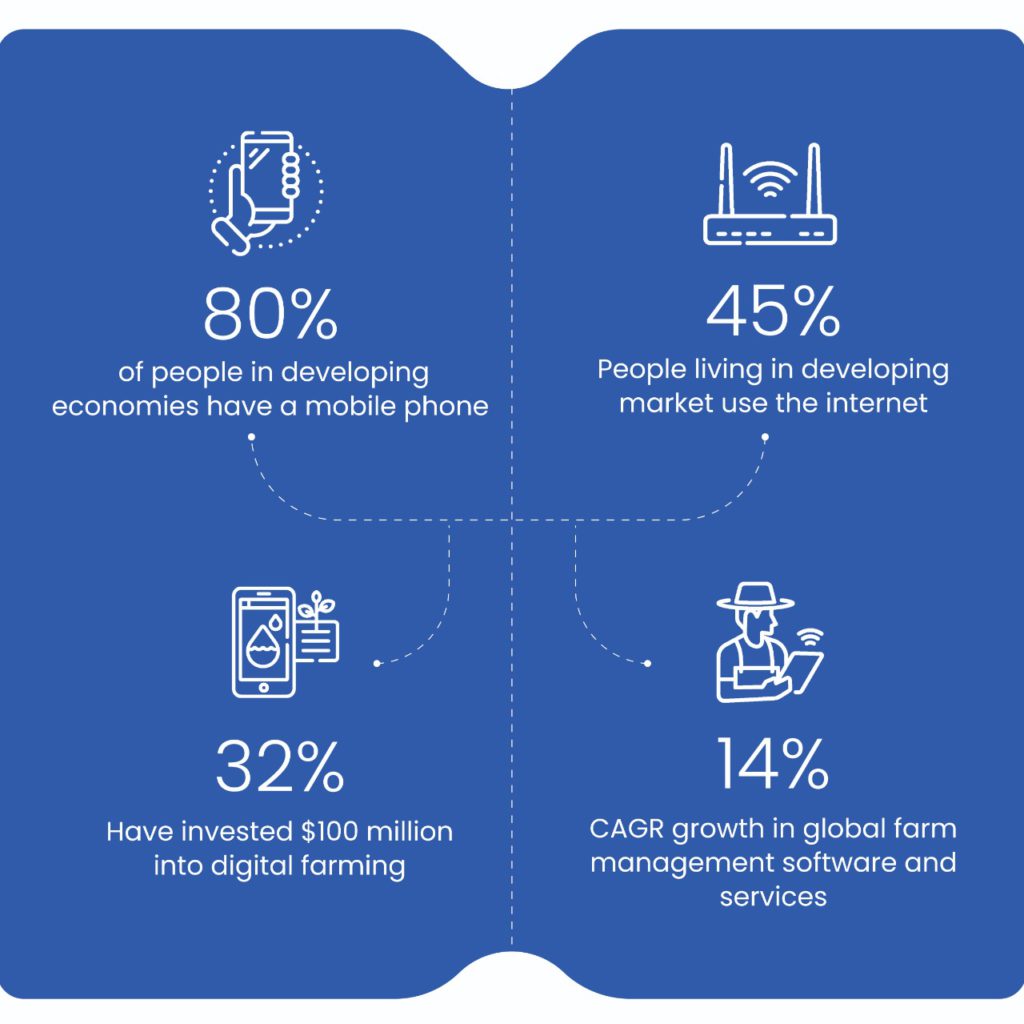
The public support by the year 2030 for farmers to implement improved practices is estimated at $20 billion for Africa, $41 billion for Latin America and $131 billion for Asia.
Challenges of Climate Smart Agriculture
- Land management practices are costly that farmers cannot afford
- Non availability of inputs in local markets
- Lack of information on alternate techniques of farming
- Technologies inconsistent with community rules and practices
- Absence of collective action for improved irrigation and communal pastures
6 Key Characteristics of Climate Smart Agriculture
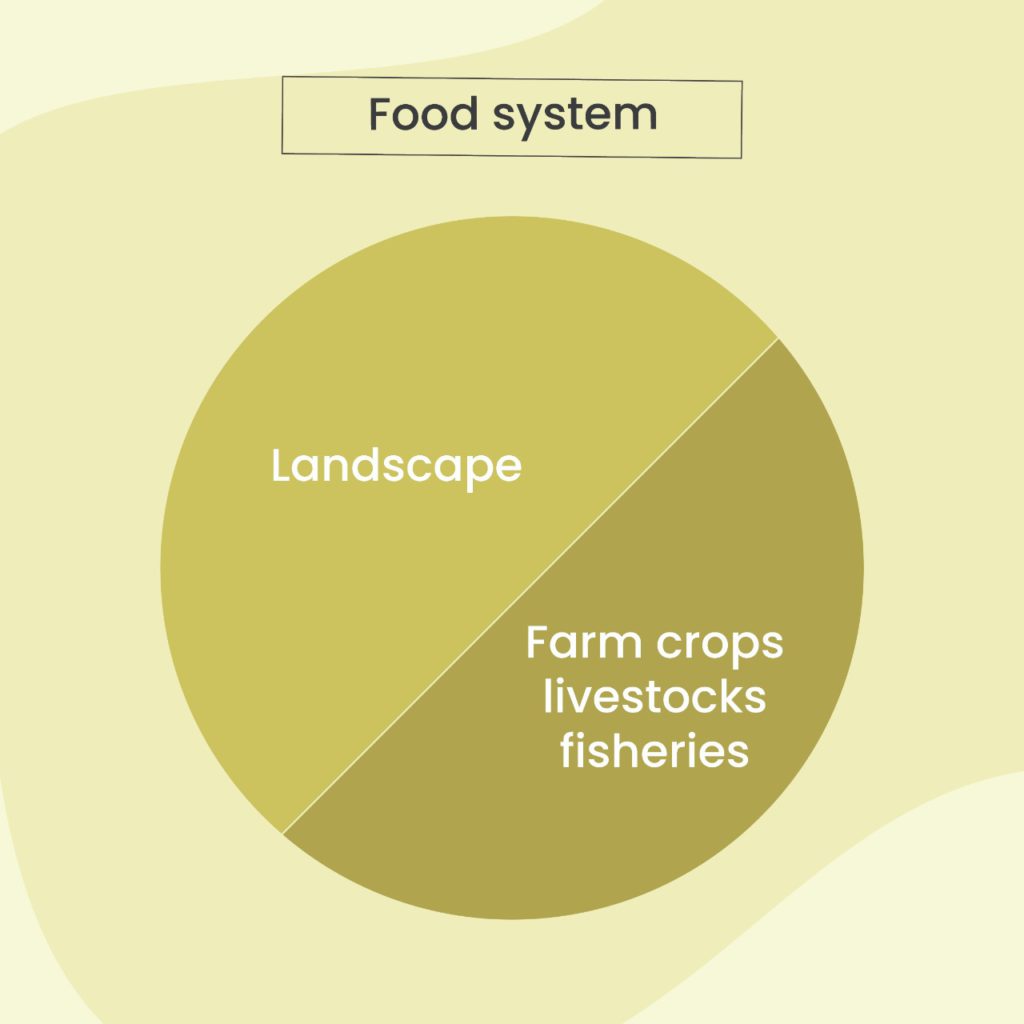
- Addresses Climate Change
In contrary to the conventional agriculture systems, CSA integrates climate change into the planning and development of sustainable agriculture systems. CSA is a subset of sustainable agriculture.
- Integrates Multiple goals and manages trade-offs
Ideally CSA focusses on increased productivity, enhanced resilience and reduced emissions. It is difficult to achieve all these and when it needs to be implemented, trade-offs are required. There is a necessity to identify synergies and weigh the costs and benefits of the different options based on the objectives of stakeholders through participation. CSA addresses the interrelated challenges of food security, climate change and identifies the integrated options that create benefits and reduces trade-offs. It also recognizes that it will be shaped by country specific contexts and how it will be applied in a social, economic and environmental situation. It also assesses the interactions between sectors and the associated stakeholders involved.
- Maintains ecosystem services
The ecosystems provide farmers with essential services including clean air, water, food and raw materials. The CSA interventions do not contribute to their degradation. CSA adopts principles of sustainable agriculture with integrated planning and management going beyond the sectoral approach.
- Multiple entry points at different levels
CSA has multiple entry points that can range from development of technologies to the elaboration of climate change models and scenarios, IT, institutional and political enabling environments, insurance schemes and value chains. It cannot be perceived just as a set of practices. There is multiple interventions all along the supply chain of the food system and not just confined to farm level. It creates enabling environments with an alignment of policies, finance and institutional arrangements.
- Context specific
Climate smartness differs according to landscape. The interventions must take into account how the different elements interact within ecosystems and as a part of political activities. It strives to reach multiple activities at system level. CSA brings together practices, policies that are not actually new but are used in the context of climate changes which is new to the farmer.
- Engages women and marginalized groups
CSA has to involve the poorest and vulnerable groups to achieve food security and build resilience. The marginal lands are vulnerable to climate events like drought and floods and are affected the most. There is a need to prioritize strengthening of livelihoods, especially of smallholders farmers by improving access to services, knowledge, resources, finance and markets. Gender also is a critical issue where women have less access and legal right to the land that they farm. CSA strives to involve all the stakeholders in decision making and form partnerships and alliances to enable sustainable development.
The first critical step to reorient agriculture production should start with the geography. Farmers can then use localized, climate smart measures to address these risks. FAO asserts that CSA allows producers to sustainably increase productivity and incomes, adapt and build resilience to climate change and reduce greenhouse gas emissions. It is a nature-positive production approach leveraging best management practices and tailored to specific crops and ecosystems.
CSA has a strong potential to contribute to achievement of the Sustainable Development Goals( SDGs). There is a need to identify the synergies and trade-offs between the 3 pillars and the 6 characteristics of CSA and the SDGs. This must be a coordinated process involving multiple stakeholders across the supply chains so as to achieve harmonious policies across climate change, land use, agriculture and other relevant sectors that otherwise may not align.
Climate Smart Agriculture with Blockchain
The Blockchain technology provides the secured environment for people to store and exchange agriculture data. Integration with IoT and edge computing supports the farms to increase crop productivity and reduce usage of natural resources. The real-time capture of data enables a smart decision support system for farmers to take decisions and increase productivity and profits. The data collected from sensors and other devices are captured in digital ledgers that provide the required security and protection against unauthorized access. Farmers can communicate with intelligent systems using the mobile app and web applications to get information on crop agronomy and farm management and planning. Blockchain provides a secure, collaborative and seamless platform for data exchange assuring trust and transparency in the ecosystem.
TraceX’s blockchain traceability solutions with the pre-harvest and post-harvest management enables capturing and tracking of sustainable practices.
Conclusion
Transitioning to a sustainable food system while adapting to climate change is imperative. Communities that face food insecurity and are vulnerable to climate change will prioritize adaptation and the changes that they bring in will build resilience and increase efficiency of inputs and production systems along with the benefits of mitigation.

